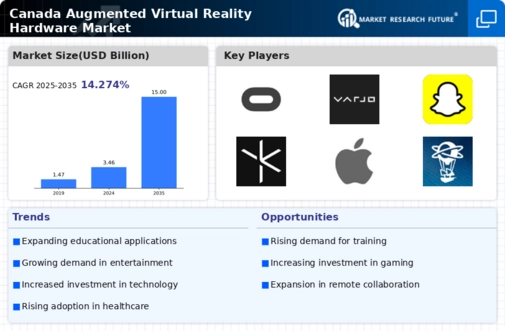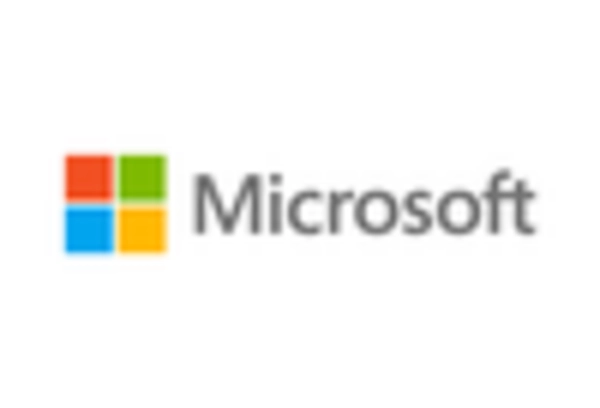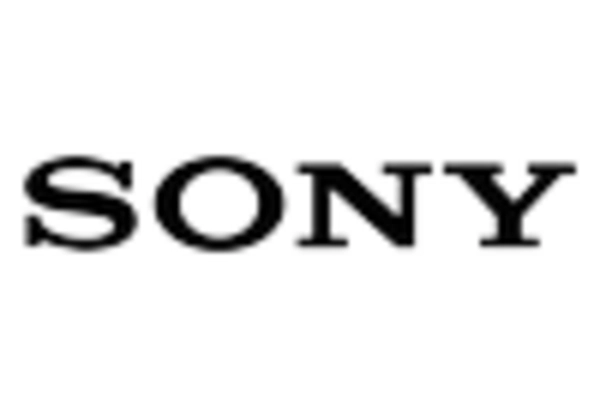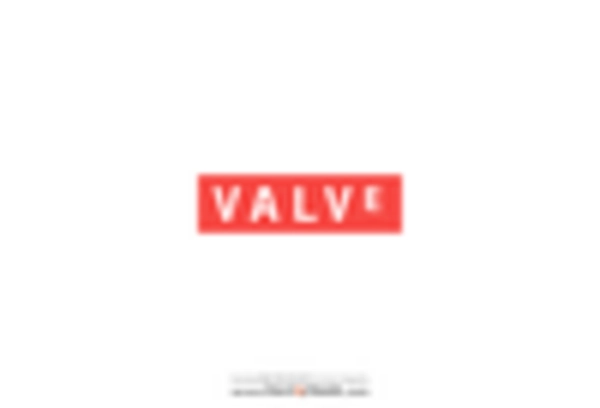Increased Investment in Startups
The augmented virtual-reality-hardware market is witnessing a notable increase in investment from venture capitalists and private equity firms. In Canada, the influx of funding into startups focused on augmented reality technologies is indicative of the market's potential. In 2025, investments in this sector reached approximately $500 million, reflecting a growing confidence in the future of augmented reality. This financial backing is enabling startups to innovate and develop cutting-edge hardware solutions. As these companies bring new products to market, they are likely to stimulate competition and drive further advancements in technology, thereby enhancing the overall landscape of the augmented virtual-reality-hardware market.
Integration with IoT and Smart Devices
The integration of augmented virtual-reality hardware with Internet of Things (IoT) devices is emerging as a key driver in the market. In Canada, the convergence of these technologies is creating new opportunities for enhanced user experiences. For instance, smart home devices can be controlled through augmented reality interfaces, providing users with intuitive interactions. This synergy is expected to lead to a growth in the augmented virtual-reality-hardware market, as consumers seek more integrated solutions. The potential for applications in home automation, security, and entertainment is vast, suggesting that the market will continue to evolve as these technologies become more intertwined.
Technological Advancements in Hardware
The augmented virtual-reality-hardware market is experiencing a surge due to rapid technological advancements. Innovations in processing power, display quality, and motion tracking are enhancing user experiences. For instance, the introduction of lightweight headsets with high-resolution displays is making augmented reality more accessible. In Canada, the market is projected to grow at a CAGR of 25% from 2025 to 2030, driven by these advancements. Companies are investing heavily in research and development to create more immersive experiences, which is likely to attract a broader consumer base. As hardware becomes more sophisticated, it is expected that applications in various sectors, including training and simulation, will expand, further propelling the market forward.
Growing Demand in Retail and E-commerce
The augmented virtual-reality-hardware market is benefiting from the increasing demand for immersive shopping experiences in retail and e-commerce. Canadian retailers are adopting augmented reality solutions to enhance customer engagement and improve sales. For example, virtual try-on solutions are becoming popular, allowing consumers to visualize products before purchase. This trend is expected to contribute to a projected growth rate of 30% in the retail sector's use of augmented reality technologies by 2026. As more retailers recognize the value of augmented reality in driving sales and customer satisfaction, the market for augmented virtual-reality hardware is likely to expand significantly.
Expansion of Training and Simulation Applications
The augmented virtual-reality-hardware market is experiencing growth due to the expansion of training and simulation applications across various industries. In Canada, sectors such as manufacturing, aviation, and healthcare are increasingly utilizing augmented reality for training purposes. This trend is driven by the need for cost-effective and efficient training solutions. For example, companies are using augmented reality to simulate real-world scenarios, allowing employees to practice skills in a safe environment. The market for augmented virtual-reality hardware in training applications is projected to grow by 40% over the next five years, indicating a strong demand for these innovative solutions.
















